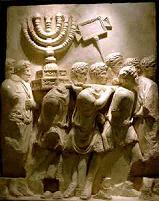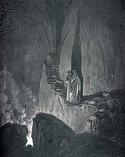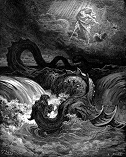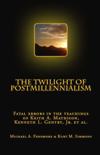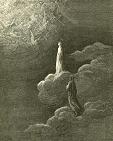The World God Created
By Ed Stevens
In our last two articles, we surveyed the big picture of redemption by studying the Scriptures which affirm that God planned redemption before He created the universe. This lesson builds on that redemptive theme by looking at the world God created and attempting to discover the identity of the world with which Genesis 1-3 deals, as well as the nature of that world before the fall of Adam into sin.
This is important to study because there are some within the Preterist movement who suggest that the creation account of Genesis is nothing more than an allegorical description of Israel’s covenantal “world” created during its exodus out of Egypt. This concept of covenantal “creation” is then used to build a “collective body” model of redemption and resurrection. Fortunately, very few advocates of a “collective body” resurrection view take this approach to Genesis. Thus, our focus here is not on those who hold a “collective body” resurrection view, but rather on those who deny a literal, historical Genesis account of creation, either because of an allegorical or an evolutionary approach. As such, I will be following a more traditional approach, which views Genesis as affirming the creation of the visible, physical realm (the earth) and all it contains, including plants and animals, the first two humans (Adam and Eve), and an actual physical Garden in which they were to dwell.
This does not mean, of course, that the original, physical creation cannot be used as types for eschatological antitypes, for the physical creation has been applied typologically in the New Testament (e.g., 1 Cor 15). Instead, what I am affirming is that any typological use of Genesis in the New Testament presupposes a real, historical creation of the physical earth, including Adam and Eve as the first two created (not evolved) human beings, a real Garden of Eden, a real Tree of Knowledge and Tree of Life, and a real, historical appearance of Satan in the form of a serpent to deceive Eve.
The main problem with both the allegorical and evolutionary approaches to Genesis is that they attack the credibility of Jesus and the New Testament writers who clearly interpreted Genesis literally and historically. So let’s look at some New Testament teaching about the world that God created:
Colossians 1:16-17 - Jesus never gives the slightest credence to evolution or long ages (both of which were taught by Greek philosophers at that time). Jesus was certainly in a position to know how the universe came to be since Colossians 1:16-17 says He existed before all things and created all things.
Mark 13:19 - Jesus taught that the universe was created by God, not the product of blind chance or natural processes (“the creation which God created”).
Matthew 24:21 - Jesus believed the world had a beginning (“since the beginning of the world”), rather than always existing and finally evolving into what we see today.
Matthew 19:4-6 - Jesus quotes from both Genesis 1:27 and 2:24, showing that Jesus believed the “male and female” created on the sixth day (in Gen 1:27) to be none other than Adam and Eve (mentioned in Gen 2). Jesus also states (v. 6) that marriage between the very first “male and female” was instituted at the very beginning of creation, a marriage identified by His quote of Genesis 2:24 to be that of Adam and Eve. Jesus takes the account of Adam and Eve literally and historically and bases the sanctity of marriage (“let not man put asunder”) upon that first union which God arranged (“what He has joined”).
Mark 10:6 - Here Jesus teaches that Adam and Eve were created at “the beginning of the creation” (at the beginning of the world, not the beginning of the human race), right after everything else had just been created—not millions of years later after everything else had long been in existence! (See also Mark 13:19.)
1 Timothy 2:13-14 - Both Adam and Eve are mentioned as historical persons. Paul says Adam was created first, implying his acceptance of Genesis’ account of Eve’s creation from Adam’s rib as historical fact. Then he mentions the deception of Eve and her fall into transgression. Mentioning the serpent’s deception of Eve in 2 Corinthians 11:3, Paul must have considered Genesis 1-3 to be historical narrative, not allegorical or mythological.
1 Corinthians 15:21-22, 45 - Sin and death came through one man (Adam). Paul accepts as historical the Genesis account of the fall of Adam into sin, which brought some kind of death to him and all of his descendants. It also proves that Adam was the first man, since it was through him that death spread to all mankind afterwards. Adam cannot be allegorical with no basis in history, otherwise the antitype (Christ) would have no historical precedence. The typology (Adam the type and Christ the antitype) presupposes a literal, historical Adam who fell into sin and brought his whole family of descendants under condemnation, so that they needed the Last Adam to bring redemption (cf. Rom 5:12-15).
Conclusion
If we removed Genesis (which depicts Creation, the Fall, the Flood, the genealogies, the Tower of Babel, the Table of Nations, Abraham, Isaac, Jacob, and Joseph) from our Bibles and considered it as either unreliable mythology or unhistorical allegory, it would destroy the foundation for the rest of the Bible, making it unintelligible and inapplicable. The New Testament bases its moral, ethical, and redemptive teaching directly on the people and events mentioned in Genesis. The whole focus of the New Testament is on Christ’s sacrifice to cover the sinfulness of mankind which was introduced by Adam and Eve. If Adam and Eve never existed, then mankind never fell into sin, rendering meaningless Christ’s death and the plan of redemption. This would remove the essential historical fabric of the Bible through which the moral, ethical, and redemptive content is interwoven. Marriage and family—the most fundamental institutions of mankind—are based directly on literal, historical people, as well as the events mentioned in the first three chapters of Genesis.
In view of the above New Testament affirmations of the historicity of the Genesis account of Creation, all conservative Christians should back away from any view of Genesis which teaches that it is nothing more than mythology, or an allegory using fictitious names of people who never really existed to represent the creation of the nation of Israel.
Genesis is an account of God creating the visible universe and all that it contains, including: the earth with all its plants and animals; and the first two humans—Adam and Eve; and an actual, physical Garden in which they were to dwell. This is the kind of world that God created. It would discredit both Christ and His apostles to teach otherwise, since it is clear from their teaching that they took Genesis literally.
As we go further in our studies of redemption, we will notice how a literal interpretation of Genesis, along with the appropriate applications of typology, will solve all of the difficult eschatological problems which are encountered at the other end of the Bible (i.e., the book of Revelation). Stay tuned.
To receive Kurt Simmons’ e-mail newsletter, The Sword & The Plow, click the Subscribe link:
All rights reserved.
